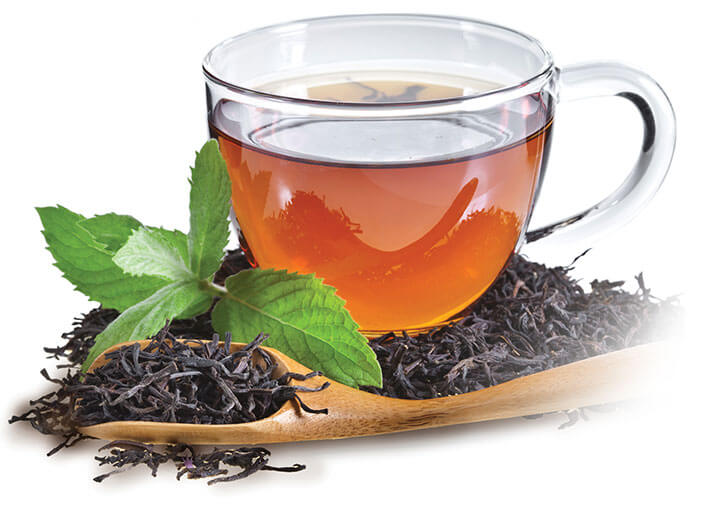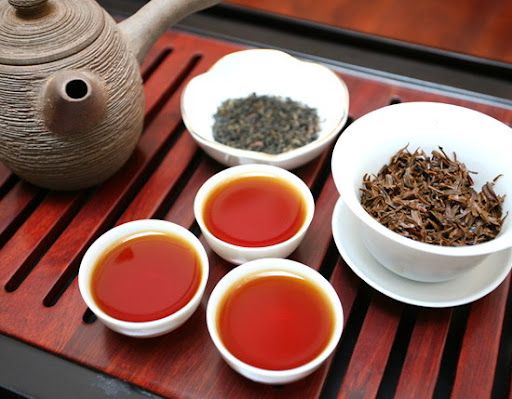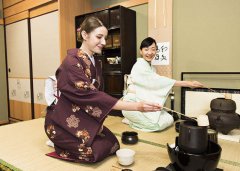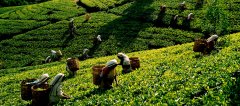The efficacy and function of black tea is suitable for what season to drink black tea, where is good, and how to drink black tea best.
These four kinds of teas (white tea, oolong tea, green tea and black tea) are all made from tea trees, but they have different tastes. This is because they are treated in different ways to achieve different degrees of oxidation. Black tea has a higher degree of oxidation than the other three teas, so its taste can be maintained for several years, while green tea may lose its flavor within a year or several years. Ceylon (Sri Lanka) is famous for its fragrant black tea!
Ceylon black tea differs from green tea in that during production, tea is allowed to fully oxidize before heating and drying. In the process of oxidation, oxygen interacts with the cell wall of the tea plant, changing the leaves of the tea plant from dark brown to the famous black of black tea. Oxidation can also change the taste of black tea, helping to increase the malt, fruit and even smoky taste, depending on the type of tea.
In contrast, when processing green tea, they have the lowest degree of oxidation. After harvest, they are quickly heated and dried to prevent excessive oxidation, turning the green leaves brown and changing the taste of freshly picked leaves.
Black tea is usually produced by one of the following two methods:
Traditional practice: with this more time-consuming production method, the tea remains intact or partially broken during processing. Tea is picked from the garden, withered to reduce moisture, rolled in various ways to scratch the leaves and begin to oxidize, oxidize to produce color and taste, heated to prevent oxidation, and then graded.
Unorthodox or CTC: in the production of this accelerated version, the tea is cut into thin slices rather than rolled up. Small pieces of tea are oxidized more quickly to produce one-dimensional, consistent, strong black tea.

Black tea has a wide range of health benefits, including but not limited to
Rich antioxidants-tea polyphenols are common antioxidants in tea. There are three types of antioxidants in black tea, including catechins, theaflavins and theaflavins. Antioxidants can reduce the risk of chronic disease because antioxidants can help clear free radicals in the body, thereby reducing cell damage.
No risk of type 2 diabetes-studies have shown that drinking the right amount of black tea every day can reduce the risk of type 2 diabetes by 70%! For healthy and pre-diabetic adults, drinking black tea can lower blood sugar levels.
Immune boosters-sugar-free drinks are rich in amino acids, antioxidants and alkylamine antigens that strengthen our bodies and immune systems and help us protect against minor ailments we experience every day.
Help cancer cells grow-multitasking polyphenols also prevent the existence of cancer cells. A study shows that polyphenols reduce the growth of new cancer cells. Another study analyzed the effects of polyphenols on breast cancer and found that these polyphenols in black tea can prevent hormone-dependent tumors from spreading in the body.
The benefits of caffeine-at first people may think that caffeine is not good for health, but black tea contains much less caffeine than coffee. The body needs a little caffeine to increase attention and awareness. Black tea also contains an amino acid called l-theanine, which improves brain activity and makes you feel energized after a cup of tea.

How to make black tea
Boil the water in a pan
Measure the tea. A teaspoon of bulk tea is perfect with 200-250 milliliters of water.
Put the tea into the teapot and pour into the boiling water. Close the lid.
After two minutes, take the lid off, stir, and then close the lid.
Let the tea soak for another 3 minutes.
When the tea is brewed enough, put a filter on the teacup and pour the tea in.
Service and enjoyment!
Important Notice :
前街咖啡 FrontStreet Coffee has moved to new addredd:
FrontStreet Coffee Address: 315,Donghua East Road,GuangZhou
Tel:020 38364473
- Prev

The basic knowledge of the tea ceremony the correct seven steps to illustrate the gestures and etiquette of the tea ceremony
In our previous blog, we discussed the tea culture around the world and the traditions of some countries. You may have noticed that we did not discuss Japanese tea culture in that blog, because Japanese tea culture is so deep-rooted and extensive that we think it is fair to dedicate the whole blog to the tea culture of this country. Historical Japanese tea ceremony
- Next

What are the best varieties of black tea? where does Ceylon black tea, the world's top black tea brand, come from?
Tea is the cornerstone of Sri Lanka, its people and culture. Tea is not only the heart of the Sri Lankan people, but also has become one of the most important pillars of the Sri Lankan economy. In 1824, the Peradeniya Botanical Garden in Kanti planted the first non-commercial tea trees of these two varieties, camelia sinensis and assamica. Commercial cultivation in Sri Lanka began in 18.
Related
- Being chased out of the rain in front of Starbucks?! Store: Sheltering from rain under umbrellas poses a safety hazard
- The white moonlight has changed?! Lucky launches "Big Winter Pear American"
- Hand-brewed coffee three-stage method, high-sweet and universal brewing method to share! What does the high sweet water level of hand-brewed coffee mean?
- What is the difference between raw, refined and full espresso coffee? How to extract espresso and taste good?
- A complete list of coffee bean names and their meanings! What is Yejia Shefi coffee? Where is Mantelin coffee?
- What grade does Arida Manor Kaduai coffee beans belong to? What treatment is Arida ASD slow anaerobic sun exposure?
- The milk tea cup becomes smaller?! Overlord Tea Girl launches a new "Return to Yunnan" series
- Accused of selling counterfeit and high-priced coffee beans! Well-known boutique coffee brand "Oukelao" bowed and apologized!
- How to make espresso dumplings? Can I eat coffee and glutinous rice balls together?
- Save the unformed and stagnant powder cakes in one second! What is the problem with stagnant water in the powder bowl of the espresso machine?

